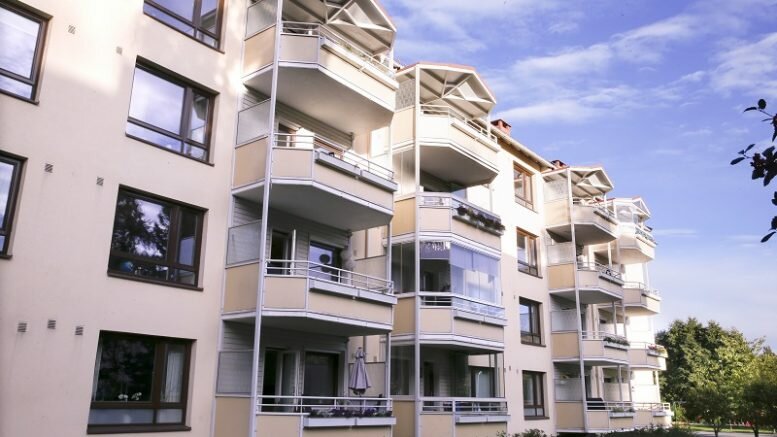One in ten live in an over crowded dwelling
One in ten residents and one in twenty households live in a crowded dwelling. This is especially common among families with children, low-income households and immigrants.
155 000 households live in crowded dwellings according to the statistics on housing conditions based on administrative registers. This is 6.6 per cent of all households. Households are considered crowded when many people live in a small space.
It is therefore more common for large households to live in crowded conditions. This means that the share is higher among residents than households. A total of 10.3 per cent of all residents live in crowded conditions. This is equivalent to 530 000 persons.
Low-income households live in crowded conditions
Tenants live in more crowded conditions than owners. 23 per cent of households are tenants, and 13 per cent of them live in crowded conditions. Four per cent of freeholders and 8 per cent of part owners and shareholders live in crowded dwellings.
Income disparities can explain both the differences in ownership rates and overcrowding rates. Among the quarter of households with the lowest income, 12 per cent live in crowded conditions.
Three per cent live in crowded conditions in the quarter with the highest incomes.
A high proportion of households that receive dwelling support and households that receive social assistance also live in crowded conditions.
However, recipients of social security below the age of 67 do not particularly live in crowded conditions, and the share among old-age pensioners is significantly lower than for the general population.
One in five children live in crowded conditions
Families with children live in more crowded conditions than other households. Twenty per cent of couples with young children and 11 per cent of couples with older children live in a crowded dwelling.
The proportion increases with the number of children in the household. By comparison, 4 per cent of single-person households and households without children are crowded.
The high share of overcrowding among families with children is reflected in the age distribution. Eighteen per cent of people under the age of 20 live in a crowded dwelling. This mostly relates to children and young people who are still living in their parents’ home.
Between 13 and 14 per cent of residents aged 20 to 39 live in a crowded dwelling. The proportion falls after the age of 40, and only one per cent of people of retirement age live in a crowded dwelling.
To a certain extent, overcrowding among families with children might be a choice. Some families accept having less space for a period while they have young children, moving to a bigger dwelling when the children are older. This is reflected by the falling overcrowding rate as the child ages.
Most crowded in cities
There are some significant geographic differences in the overcrowding rate. The share is highest in the cities. Twenty per cent of residents in Oslo live in a crowded household. The shares in Bergen and Trondheim are around 14 per cent. The shares are also high in small and medium-sized municipalities with universities and colleges, including Ås, Lillehammer and Bø in Telemark.
An important reason for the geographic differences is that residents live in different building types, and there is a correlation between building type and the degree of overcrowding. Eleven per cent of households living in a multi-dwelling building are crowded, compared to 6-7 per cent in houses with two dwellings, row houses etc. and 4 per cent in detached dwellings.
Another explanation for the difference between cities and other municipalities might be the share of immigrants. Immigrants tend to live in more crowded conditions than the rest of the population.
Twenty-nine per cent of immigrants from Africa, Asia etc. and 17 per cent of immigrants from the EU/EEC etc. live in a crowded dwelling. The share is 8 per cent in the rest of the population.
Crowded living conditions are more common among immigrants in all of the large municipalities, and the share is highest among immigrants from Africa, Asia etc. in almost all of them.
One example of this is Oslo, where 36 per cent of immigrants from Africa, Asia etc., 24 per cent of immigrants from other countries and 17 per cent of the rest of the population live in a crowded dwelling.
© SSB / Norway Today



